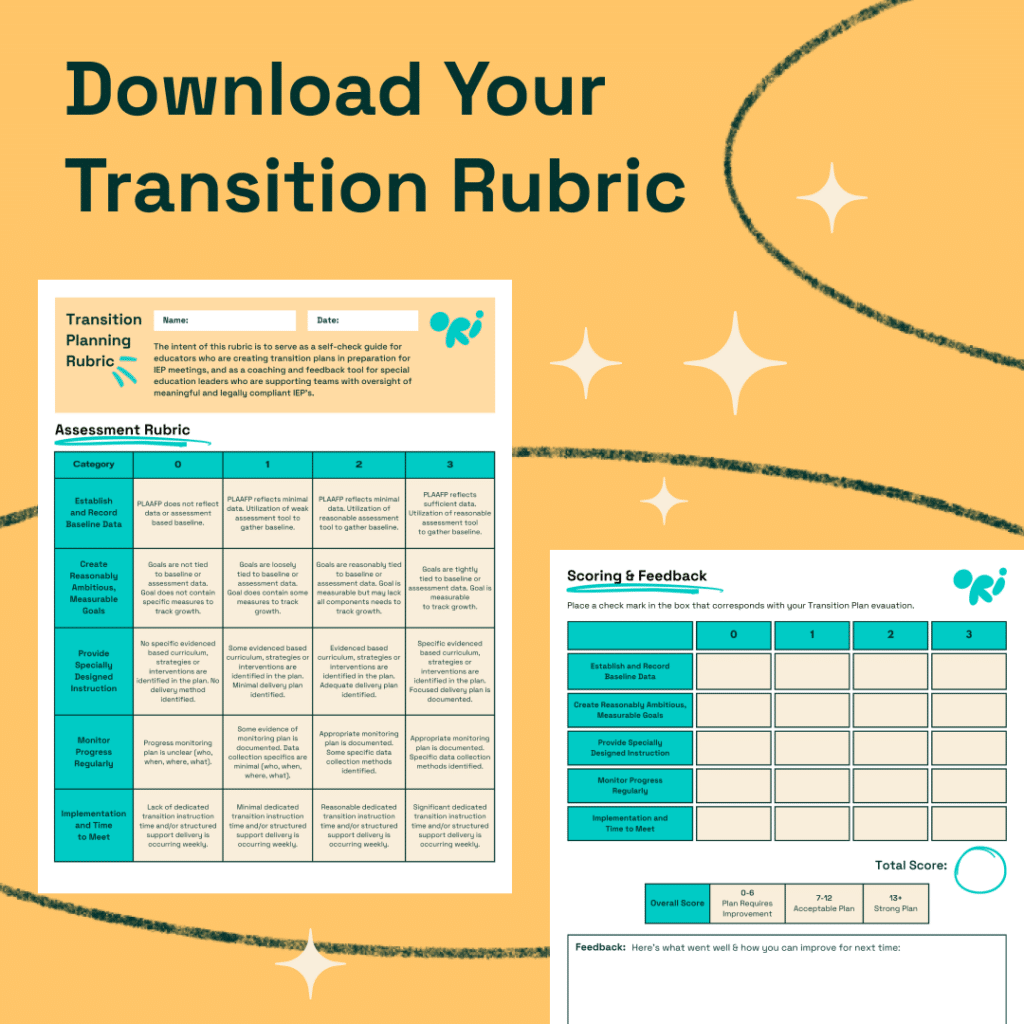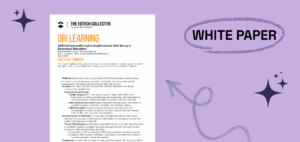Students with autism often face unique challenges in the classroom. To give them equal opportunities to succeed, Individualized Education Programs (IEPs) outline specific accommodations tailored to their individual needs.
This article will explore ten essential IEP accommodations for autism that can significantly improve the learning experience for students with ASD. We’ll explore practical strategies and use real-world examples to guide you in creating inclusive and supportive learning environments for students on the spectrum.
Visual Supports
Visual supports are key communication tools for many students with autism. They can include pictures, symbols, or written words that help explain information or routines. For students who struggle with spoken language, visuals can be a lifeline.
There have been some concerns that visual supports affect a child with autism’s ability to learn language, but no evidence of this has been found in studies. On the contrary, many children on the spectrum have been found to start using more language soon after visual supports are introduced in a school or home setting.
The types of visual supports used depend on the child’s individual needs. For instance, they may benefit from a visual schedule that shows them what will happen next. Or, they may need help understanding social situations, and visual stories (which break down social interactions into easy-to-follow steps) can be incredibly helpful here.
Using visual supports can make the world a bit more predictable and understandable for children with ASD, making them a key component of IEP accommodations for autism.
Flexible Scheduling
Routines are also often essential for children with autism, especially during their fast-paced, progression-focused school years. Unexpected changes can be overwhelming and stressful. That’s why flexible scheduling is a key accommodation for many students with autism, to make school life easier and less anxiety-inducing.
Allowing for flexible scheduling by, say, adjusting class times or break periods, can help create a learning environment that better suits the needs of students with ASD.
For example, a student might find it difficult to concentrate after lunch, and a short break or a change of activity could help them refocus. Or perhaps a student needs extra time to transition between classes. Building in a few extra minutes can make a big difference.
A great way to effectively implement flexible scheduling in middle school is to create individualized daily schedules with visual supports. This can help students anticipate changes, reduce anxiety, and gain independence. A study in Research in Autism Spectrum Disorders found that participants began transitioning between classroom activities more independently after being exposed to two types of visual schedules.
Our Transition Planning Rubric is designed to support district leaders and educators in guiding their teams towards excellence in transition planning.
It provides comprehensive criteria that cover the breadth of transition planning, from gauging student engagement to evaluating post-secondary goals and services.
Why Use This Rubric?
- Tailored Feedback: Utilize a structured scoring system to evaluate and enhance individual transition plans.
- Fillable Format: Conveniently fill out the rubric digitally or print it for hands-on collaboration.
- Action-Oriented Guidance: Benefit from a clearly defined path towards creating robust and legally compliant IEPs.
Expand your team’s capabilities and improve the success of IEP meetings.

Social Skills Training
Social skills can be a challenge for many students with autism, which is why social skills training is often included in an effective IEP for these students. Teaching students how to interact with others can help them build friendships and improve communication with their peers, in turn increasing their confidence.
Social stories are a great way to start. These simple stories break down social situations into easy-to-understand steps and have been proven effective at addressing inappropriate behaviors and improving outcomes when used in general education settings.
Peer mentoring and group activities can be beneficial IEP accommodations for high-functioning autism. These students often have strong cognitive abilities but may struggle with social interactions. Group work provides students with opportunities to practice their social skills in a structured environment, while peer mentoring allows them to make one-on-one connections. The desired outcome is that the student develops their empathy, builds friendships, and is better equipped to handle social situations.
Remember, social skills are learned, and with patience and practice, students can make significant progress. This makes social skills training one of the key IEP accommodations for autism in middle school.
Chunking and Scaffolding
Tackling large tasks is another common challenge for students with autism due to their overwhelming nature. Breaking down assignments into smaller steps, or “chunking,” can make learning more manageable. Combining this approach with “scaffolding,” which provides support as students learn new skills, can be incredibly beneficial when used in the student’s IEP.
Chunking and scaffolding can be tailored to meet a student’s individual learning needs For instance, for a student struggling with a long math problem, chunking would involve breaking the problem down into smaller steps and providing clear instructions, helping the student understand the process better. If the teacher offered hints or examples to guide the student as they worked through each step, this would be scaffolding.
Chunking and scaffolding help students build confidence and independence, with proven benefits, especially in reading, literacy, and language development. A study referenced in Enhancing Reading Comprehension for Students with Autism examined the effectiveness of a program using the scaffolding approach along with software to teach various reading skills. The study authors concluded that the students’ ability to construct sentences “enhanced greatly” in a short period.
Individualized Instructional Strategies
Every student with autism is unique, so it’s essential to tailor your teaching methods to their specific strengths and challenges. Individualized instructional strategies, another key IEP accommodation for students with ASD, involve creating a learning plan that fits the student’s needs perfectly.
These strategies can vary from student to student, but they have one thing in common: they’re designed to support inclusive education for autistic students.
Possible strategies include using technology to provide extra support, such as speech-to-text software or visual aids, and adapting teaching styles to match the student’s learning style, whether it’s visual, auditory, or kinesthetic. The goal is to create an environment where the student feels engaged and motivated, and selecting the right strategies for the student in question is an important part of drawing up their IEP accommodations for autism.
Prepare your students for lifelong success with Ori’s Transition Curriculum.
Reduced Sensory Distractions
Sensory overload is common for many students with autism. When creating an IEP plan for a student on the spectrum, consider how you can create a calmer classroom environment to support their ability to learn and focus.
This involves reducing sensory distractions, such as noise levels, lighting, and even the feel of furniture, as much as possible. A 2023 review on acoustic conditions in classrooms even noted that high levels of reverberation and background noise could lead to a sensory overload in children with autism.
While there’s likely not a lot that you can do about the likes of classroom acoustics, you can still make a big difference by implementing small changes to support the particular student’s needs, like using noise-canceling headphones or providing soft seating.
IEP accommodations for autism in middle school may also include incorporating sensory breaks throughout the day to help students regulate their senses, feel calmer, and focus better. Some strategies to consider include:
- Short periods of physical activity, such as stretching or jumping jacks, to help release energy and improve focus.
- Sensory tools like fidget toys or stress balls to provide tactile stimulation.
- Playing calming music or using noise-canceling headphones to reduce auditory overload.
- Sensory-friendly spaces, such as a quiet corner with soft seating and dim lighting, to offer a retreat from sensory stimulation.
Peer Mentoring
Peer mentoring involves pairing students with classmates who can offer support and guidance, which has been proven to help improve social skills and overall well-being.
A buddy system can be a great starting point. With this method, you’ll assign a classmate to help a student with autism who may struggle to handle the school environment. You may choose to assign older students to mentor younger ones, offering advice and support.
Make sure you choose compatible pairs, and it’s best to “train” the mentors before you begin the system. It’s important that your selected mentors have the necessary knowledge about autism and communication strategies to support their peers effectively. The intended outcome here is that students with autism feel more connected and included in their school community.
Consistent Routines
A predictable school day helps students with ASD feel at ease. When you’re making an IEP for a student who struggles with change, consider how you can establish clear and predictable schedules to help the student feel safe and confident at school.
A structured learning environment has been proven to improve academic outcomes for students with autism; in fact, the provision of structure was reported to be the strongest factor affecting academic attainment for students with ASD.
There are a few ways you can reinforce routines, providing a sense of security and reducing anxiety for students on the spectrum, including:
- Visual schedules
- Timers and countdowns
- Physical activities to mark transitions between exercises or classrooms
What’s important is that you’re consistent across different classes and teachers to avoid confusion, which could have the opposite of the intended effect and cause more instability and anxiety for the student. While some flexibility is necessary, you should aim to maintain a core structure—and when you do need to make changes, introduce them gradually.
Behavioral Interventions
Many students with autism have behavioral challenges, but with the right approach, these challenges can be managed in a school environment. An effective and supportive method of managing challenging behavior is to develop a positive behavior support plan.
This plan should focus on identifying the function of the behavior, rather than just the behavior itself. When you understand why a student is behaving in a certain way, you can develop strategies to address the underlying issue.
Positive reinforcement is an essential component of a successful behavior support plan. For instance, you could praise a student for staying on task, offer extra recess time for completing assignments, or use a token economy system can motivate positive behavior. A 2010 study, “Improving Motivation for Academics in Children with Autism”, found that children with ASD worked faster, and were more interested and less disruptive, when rewards-based motivational components were incorporated into their academic tasks.
Consistent reminders and feedback reinforce your expectations. For example, explicitly stating “stay in your seat during independent work time” and providing visual cues can clarify your expectations.
Additionally, consistent consequences help you set clear standards and effectively implement your behavior plan. If a student disrupts the class, a logical consequence might be a brief time-out or loss of a privilege. Consistency helps students learn that their actions have consequences and promotes positive behavior.
Regular Communication with Parents or Guardians
It’s important that you have open and frequent communication with the parents, guardians, or carers of the student you’re making the IEP plan for, to create and maintain a consistent approach that benefits the student.
You can keep everyone informed about the student’s progress and challenges through regular meetings (which can be conducted via a phone or video call if more convenient), and emails are a great way to share quick updates that don’t require a meeting.
It’s essential that you share information about the student’s behavior, academic performance, and social interactions with their guardians. Involving parents in the IEP development process will give you access to the insights and perspectives of the people who know the student best.
Building a strong partnership with parents will enable you to create a supportive and collaborative environment that promotes the student’s overall well-being and academic success.
Open communication is a two-way street. Encourage parents to share their observations and concerns, as this information can be invaluable in helping you to develop effective support strategies.
Implementing IEP Accommodations for Students with Autism: Next Steps
Implementing these IEP accommodations for autism should enable you to create a more inclusive and supportive learning environment for students with ASD. It’s essential to remember that every student is unique, and the accommodations on their plan should be tailored to their individual needs.
Remember, these accommodations aren’t just about helping students with autism; they benefit the entire classroom community. Providing the right support empowers students with autism to thrive in the classroom and beyond, and, importantly, fosters understanding and respect for individual differences amongst everyone in the school environment.
Ori Learning’s Transition curriculum has been intentionally designed to support students mild-to-moderate learning disabilities in transitioning beyond secondary school. It features built in accommodations like text to speech, text enlargement, and speech-to-text functionalities, ensuring that students can learn and communicate in a way that suits them. Get in touch with us today to take the next step in setting your students up for post-secondary success.
More on IEP Accommodations for Autism
Specific needs and accommodations for autism vary widely from one person to the next. However, common challenges faced by students with autism include difficulty with social interaction, communication, sensory processing, and executive functioning. IEP accommodations for autism focus on providing structure, predictability, and support. This might involve using visual aids, creating sensory-friendly environments, offering flexible scheduling, and providing explicit social skills instruction.
IEP strategies for autism involve creating a supportive learning environment tailored to individual needs. This includes using visual aids, flexible scheduling, social skills training, breaking down tasks, personalized instruction, reducing sensory distractions, peer mentoring, establishing routines, behavior management, and strong parent partnerships. Using the correct IEP accommodations for students with autism enables educators to help these students succeed in the classroom and beyond.
Accommodating a student with autism is about establishing an inclusive learning environment. This starts with understanding their specific needs, then delivering tailored accommodations to support their learning. Remember, each student is unique, so individualized approaches are essential. The goal is to work collaboratively with the student, their family, and other professionals, to create a positive and successful learning experience.





